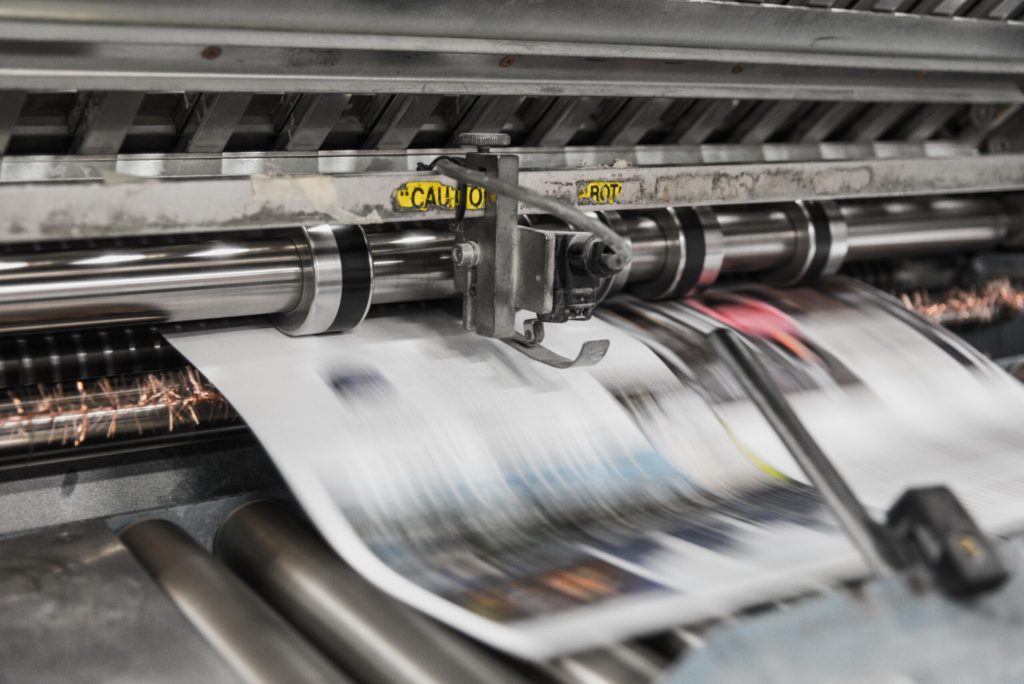By Fergus Bailie, CEO of Bailie Group
For years, many businesspeople – in the marketing environment and beyond – have claimed that ‘print is dead’. But utilised cleverly alongside digital media strategies, it could actually prove key to greater comms inclusivity in 2021 and beyond.
I find the print vs digital debate a frustrating one, if I’m honest. Of course, people’s hunger for relevant content, on-demand and wherever they may be, is just one of the reasons we’ve witnessed the incredible adoption of digital communications strategies, among brands large and small. And as an agency collective, we’ve enjoyed designing and developing digital campaigns, apps, websites, platforms and systems which haven’t just driven customer engagement – they’ve changed lives.
But that doesn’t mean I think the role of print is extinct.
As an organisation we’ve never been dogmatic. Instead, we concentrate on the purpose we’re working towards – do we need to inform, inspire, entertain, encourage compliance or change behaviour, for example? Research and insight are key. When we’re clear on the ‘why’, we try to encourage a ‘right content, right person, right time’ mindset, but with our eyes wide open to the fact that different people could interpret the exact same message in various ways.
Keeping the audience front and centre, is key.
Digital comms is usually a mass enabler, which explains why most brands are now defaulting to online channels, as standard. But a by-product of this step change is the creation of an unbelievable amount of noise – hence the existence of clutter folders that sit alongside your inbox.
We’ve therefore seen a renaissance of print in recent times, as a means of achieving cut through. Post has grown to become something of a comparative rarity, and for that reason I personally open every piece of mail I receive. This doesn’t mean it gets my full attention, but I open it at least – which as marketers, we know, is the crucial first step.
In short, this is why an informed, flexible marketing mindset, matters. There’s often a place for an app, a mobile-optimised website, an email campaign, a social media strategy and print – the comms professional shouldn’t dictate this mix, based on their own preferences or skill set.
Much of this will be preaching to the converted, but this multichannel blend is arguably now more important than ever.
Following the onset of the health crisis, we’ve seen a further resurgence of print as a means of conveying trust, authenticity and message importance – things that digital struggles with, in comparison. Brands have sent leaflets to people’s homes to remind them they’re there, bus wraps have been used to help keep citizens alert and informed when out and about, employers have sent notes to staff to encourage that feeling of connectedness, and a letter was even the medium-of-choice for the prime minister, at the height of lockdown.
The aforementioned ‘cut through’ objective will have undoubtedly formed part of the decision-making process when planning the above comms. But fostering that sense of trust will have been paramount too.
Then there’s the importance of inclusivity – a topic that is fortunately attracting an ever-increasing degree of attention.
Content plays a role in preventing the creation of exclusionary barriers, not least because, in 2019, The National Literacy Trust estimated that 5.1 million adults in England have a sub-11 reading age.
But efforts need to extend beyond prose-based considerations, and printed communication is imperative here. Millions of people in the UK are still said to be living in digital poverty, with ONS data reporting that the likelihood of having internet access at home increases along with income – only 51% of households earning between £6000-10,000 had home internet access, compared with 99% of households with an income exceeding £40,001.
And the digital divide is believed to have worsened as a result of COVID-19, which risks compounding the feeling of isolation for the UK’s most vulnerable residents, including the elderly. So when it comes to an ability to access critical information such as that relating to healthcare, this could – quite literally – be a matter of life and death.
I’m a huge digital advocate and the journey that this can take organisations on, for public good. When we started working with the Met Police, for example, it was to deliver a print management contract. But when we successfully reduced unnecessary spend, we delved deeper and collaborated further, to improve tablet use and intranet interaction, reduce physical back-office strains and streamline the magnitude of processes associated with handling 101 calls. This went on to prove the catalyst to creating Single Online Home – the world’s biggest online police station which provides the public with a useful digital alternative to dialling 101 and is being rolled out to over 40 forces across the country.
We would never have reached this point had we been a purely digital or purely print agency. But the transformation was all about remaining true to the purpose of the assignment.
Sometimes technology will play the overriding part in reaching the end goal. Other times, it may need to take a back seat in favour of print. It’s about the blend that works.









